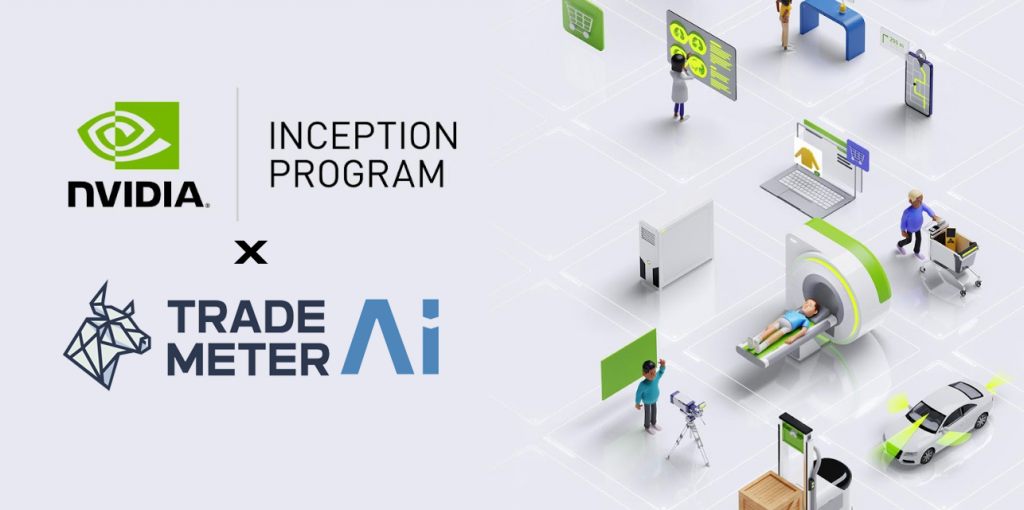1. Clear Trading Goals
Tip: Determine your goals for trading, such as risk tolerance, expected returns and your preferred asset.
Why: A clear purpose determines the choice of an AI algorithm guidelines for risk management and trading strategies.
2. Reliable AI Trading Platforms
Tips: Select AI-powered trading platforms that permit full automation and the integration of your brokerage company or copyright exchange. Examples include:
For Penny Stocks: MetaTrader, QuantConnect, Alpaca.
For copyright: 3Commas, Cryptohopper, TradeSanta.
What’s the reason: A strong platform with strong capabilities for execution is crucial to success with automation.
3. Customizable Trading algorithms are the key focus
Utilize platforms that allow you to create or customize trading algorithms that are adapted to your specific strategy (e.g. mean reversion and trend-following).
Why? The flexible algorithm allows you to customize the strategy to fit your personal style of trading.
4. Automate Risk Management
Create risk management tools that are automated, such as stop loss orders, trailing stops and take profit levels.
The reason: These security measures protect your portfolio against large loss, especially when markets are volatile, such as the penny stock and copyright markets.
5. Backtest Strategies Before Automation
Backtest your automated strategies to test their performance.
The reason: Backtesting can help establish if a strategy is feasible, thereby reducing the risk of a poor performance on live markets.
6. Check regularly for performance and adjust the settings
Even though trading is automatic It is crucial to keep an eye on the performance on a regular basis to detect any issues.
What to watch for What to watch for: Loss, profit slippages, profit, and whether or not the algorithm is in line with market conditions.
Why? Continuous monitoring makes sure that adjustments are timely taken if market conditions change and the plan is effective.
7. Implement adaptive algorithms
Tip: Select AI tools that adjust trading parameters according to the latest data. This will allow you to adjust the settings of your AI tool to changing market conditions.
Why? Markets are constantly changing and adaptable algorithms are able to optimize strategies for penny stocks and copyright to keep pace with the latest trends or volatility.
8. Avoid Over-Optimization (Overfitting)
Over-optimizing a system could result in excessive fitting. (The system is able to perform best in backtests but fails in real circumstances.
Why? Overfitting decreases the strategy’s generalization to market conditions in the future.
9. Utilize AI to Detect Market Anomalies
Tip: Use AI to identify unusual market patterns or anomalies in data (e.g., sudden spikes in the volume of trading news sentiment, or copyright whale activity).
Why? Early recognition of these signals will allow you to make changes to the automated strategies you employ to trade before significant market movements take place.
10. Integrate AI with regular Alerts and Notifications
Tips: Set alerts in real-time to be alerted of important market events and trading executions as well as changes to the algorithm’s performance.
The reason: You will be aware of any market movements and take swift actions if needed (especially for volatile markets, like copyright).
Cloud-based solutions are a great method to increase the size of your.
Tips: Use cloud-based trading platforms for greater scalability, speed, and the capability of running different strategies at once.
Cloud solutions let your trading platform to run all the time, without interruption, which is especially essential for copyright markets, that never shut down.
By automating and monitoring your trading strategies, you can improve performance while minimizing risk using AI to power stock and copyright trading. Take a look at the most popular ai investing advice for more info including best stock analysis website, best copyright prediction site, ai stock trading app, best copyright prediction site, ai stock trading, ai for trading stocks, ai investment platform, best ai trading bot, ai investing app, using ai to trade stocks and more.

Ten Suggestions For Using Backtesting Tools To Improve Ai Predictions, Stock Pickers And Investments
It is important to use backtesting efficiently to enhance AI stock pickers as well as enhance investment strategies and forecasts. Backtesting allows you to simulate how an AI-driven strategy performed under the past, and provides insights into its effectiveness. These are 10 tips on how to utilize backtesting to test AI predictions stocks, stock pickers and investment.
1. Use High-Quality Historical Data
Tip. Make sure you’re using complete and accurate historical data, including volume of trading, prices for stocks and reports on earnings, dividends, or other financial indicators.
What’s the reason? High-quality data will ensure that the backtest results are accurate to market conditions. Incomplete data or incorrect data could result in false results from backtesting that could affect the credibility of your plan.
2. Add Realistic Trading and Slippage costs
Backtesting: Include realistic trading costs in your backtesting. These include commissions (including transaction fees) slippage, market impact, and slippage.
Why: Failing to account for slippage and trading costs can overstate the potential returns of your AI model. Consider these aspects to ensure that your backtest will be more accurate to real-world trading scenarios.
3. Tests across Different Market Situations
Tips: Run the AI stock picker in a variety of market conditions. This includes bear market, and high volatility periods (e.g. financial crises or corrections to markets).
What’s the reason? AI model performance can differ in different market conditions. Testing across different conditions ensures that your strategy is dependable and able to change with market cycles.
4. Utilize Walk-Forward Testing
TIP : Walk-forward testing involves testing a model by using a rolling window historical data. Then, test the model’s performance by using data that isn’t part of the sample.
What is the reason? Walk-forward tests can help test the predictive power of AI models that are based on untested data. This is a more accurate gauge of the performance of AI models in real-world conditions than static backtesting.
5. Ensure Proper Overfitting Prevention
Tips: Try the model in different time frames to ensure that you don’t overfit.
What happens is that when the model is too tightly tailored to historical data, it is less accurate in forecasting future trends of the market. A balanced, multi-market model must be generalizable.
6. Optimize Parameters During Backtesting
Use backtesting tool to optimize crucial parameters (e.g. moving averages. Stop-loss level or size) by changing and evaluating them repeatedly.
The reason: Optimizing these parameters will enhance the performance of AI. As we’ve previously mentioned it’s crucial to ensure that optimization does not result in overfitting.
7. Drawdown Analysis and Risk Management Integration of Both
Tips: Use strategies for managing risk, such as stop-losses, risk-to reward ratios, and sizing of positions during backtesting to assess the strategy’s ability to withstand large drawdowns.
How to do it: Effective risk-management is critical for long-term profit. By modeling your AI model’s handling of risk and risk, you’ll be able to identify any vulnerabilities and adjust the strategy accordingly.
8. Analyzing Key Metrics Beyond the return
To maximize your return Concentrate on the main performance metrics, including Sharpe ratio maxima loss, win/loss ratio, and volatility.
These measures will help you get a comprehensive view of the performance of your AI strategies. In relying only on returns, it’s possible to overlook periods of high volatility or risks.
9. Simulation of different asset classes and strategies
Tips: Test your AI model using different asset classes, such as ETFs, stocks or copyright and different strategies for investing, such as mean-reversion investing, value investing, momentum investing, etc.
What’s the reason? By evaluating the AI model’s ability to adapt, it is possible to evaluate its suitability for different market types, investment styles and assets with high risk, such as cryptocurrencies.
10. Refine and update your backtesting process often
Tip. Make sure you are backtesting your system with the most current market data. This ensures that it is current and is a reflection of evolving market conditions.
Why: Markets are dynamic and your backtesting needs to be too. Regular updates ensure that your AI models and backtests remain effective, regardless of new market trends or data.
Make use of Monte Carlo simulations to determine the level of risk
Tip: Monte Carlo simulations can be used to model multiple outcomes. Run several simulations using various input scenarios.
Why: Monte Carlo simulations help assess the probabilities of various outcomes, allowing a more nuanced understanding of the risk involved, particularly in volatile markets like cryptocurrencies.
These suggestions will allow you optimize and evaluate your AI stock selection tool by utilizing backtesting tools. A thorough backtesting process makes sure that your AI-driven investment strategies are robust, reliable, and adaptable, helping you make better informed choices in highly volatile and dynamic markets. See the recommended ai for stock market advice for more info including coincheckup, trading chart ai, trading with ai, ai stock trading bot free, using ai to trade stocks, ai investment platform, ai day trading, ai penny stocks to buy, ai stocks, ai stocks and more.
